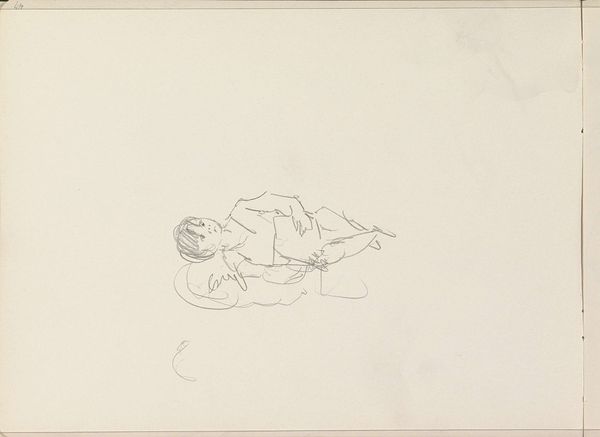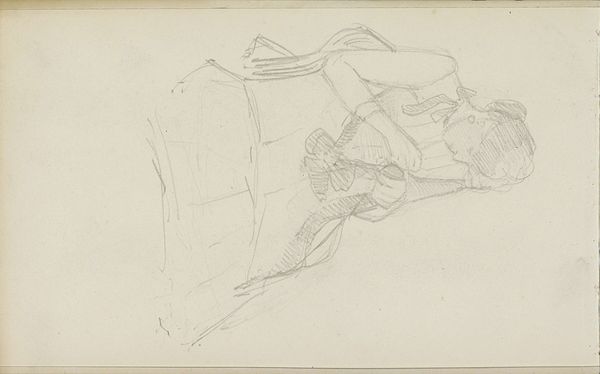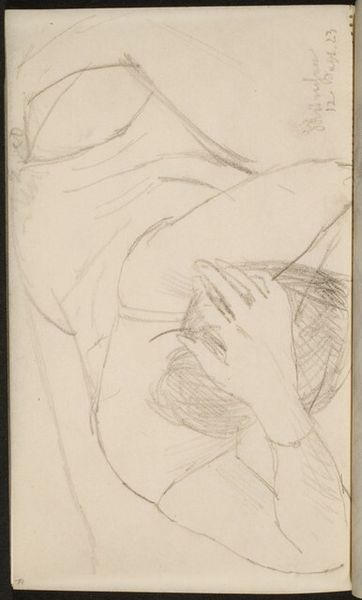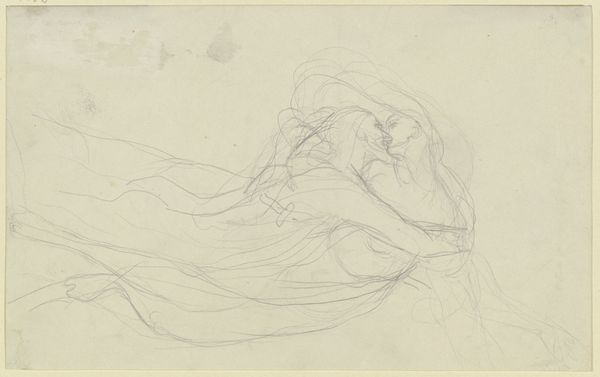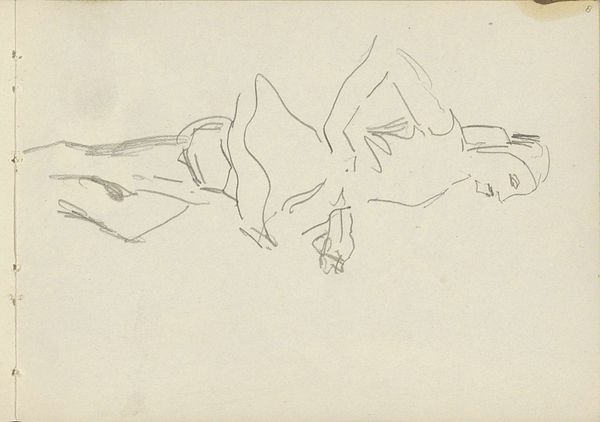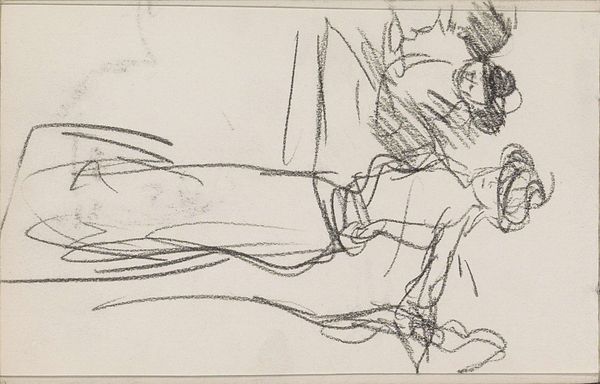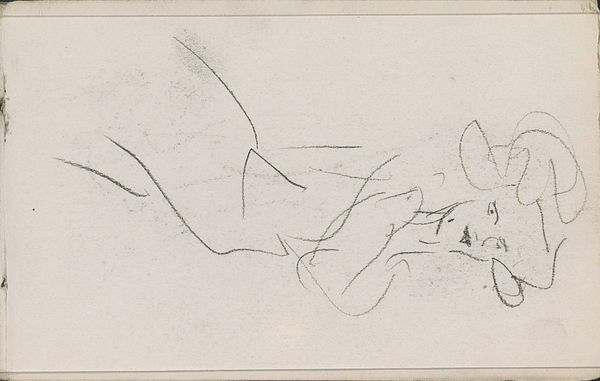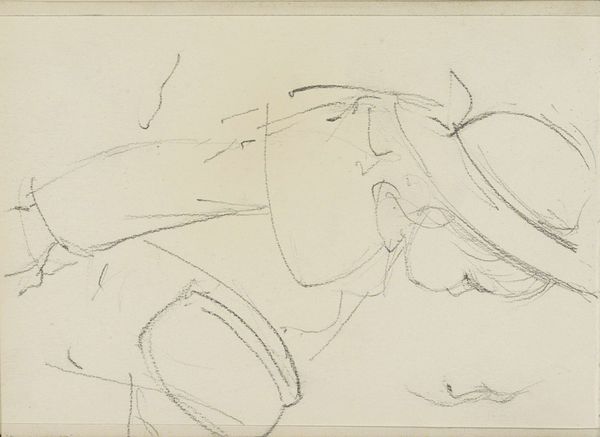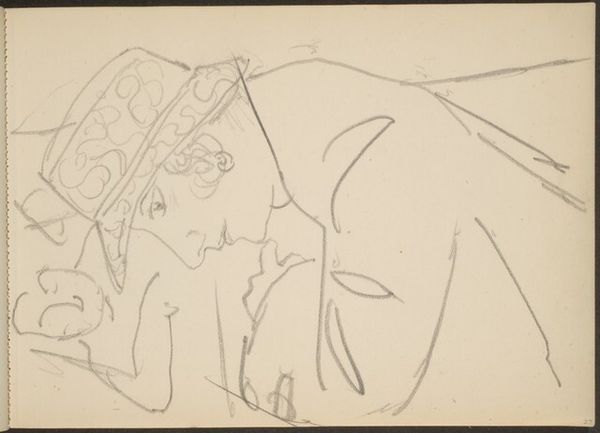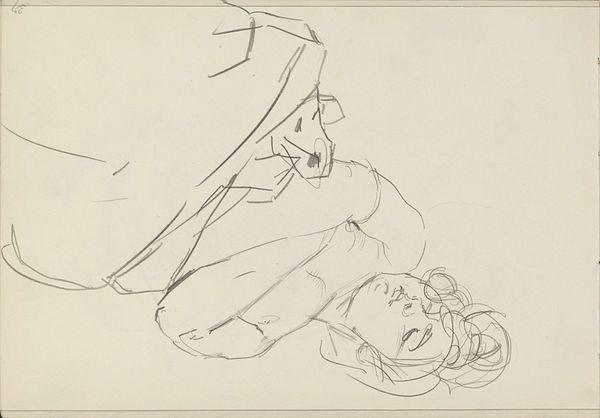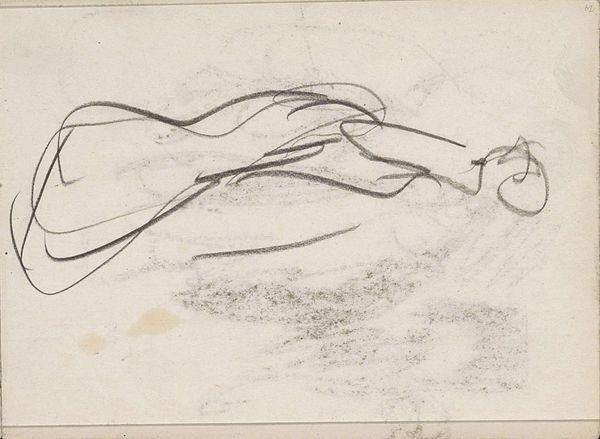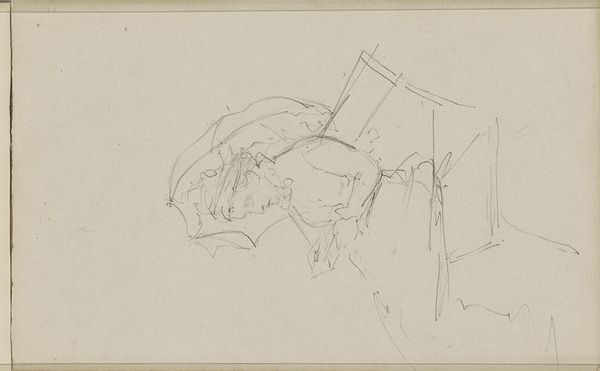
Copyright: Rijks Museum: Open Domain
Curator: Here we have Isaac Israels' "Standing Woman, Possibly in Front of a Mirror," a drawing dating sometime between 1887 and 1934, held in the Rijksmuseum collection. Editor: My first impression is one of swiftness and elusiveness. The pencil strokes seem almost frantic, capturing a fleeting moment. Curator: Precisely. Consider the socio-economic context. Israels was moving within circles increasingly fascinated by capturing modern urban life. This graphite and pencil drawing embodies the speed and impermanence of that era, showing an artistic process akin to reportage—quickly sketched observations ready for further development in paintings destined for a burgeoning art market. Editor: But, focusing on the formal qualities, look at how Israels used line weight to suggest form and depth. The density of lines around the head and upper body creates a focal point, while the looser strokes hint at the rest of the figure, almost fading into the negative space of the paper. It’s about suggestion and immediacy more than precise representation. Curator: And what's compelling is the lack of finish itself; the fact that it's a drawing, perhaps never meant as an end-product but instead as an iterative stage—exposes a piece of the labor rarely highlighted, democratizing access to how art is produced and how swiftly it is generated as an object ready for display. Editor: True. The composition leads our eye in and out of the represented scene; the stark white space heightens the figure, the lack of solid ground emphasizing transience. What is the interplay of lightness and darkness? It mirrors how the viewer attempts to define what is there with limited information—mimicking Israels’ speedy drawing process. Curator: Thinking materially, this graphite is very unassuming; it could've been an anonymous tool, available to anyone. Israels transforms what could've been seen as common place by capturing aspects of social activity that were starting to evolve rapidly due to urbanization, modern economies, and technology of mass reproduction. Editor: I am struck by its beauty now; seeing how Israels conveys this tension through simple gestures! It underscores the enduring power of lines and how they form shape to captivate the eye even today. Curator: A very interesting lens, which helps reveal how it operates between sketch, study, artwork, and commodity.
Comments
No comments
Be the first to comment and join the conversation on the ultimate creative platform.
